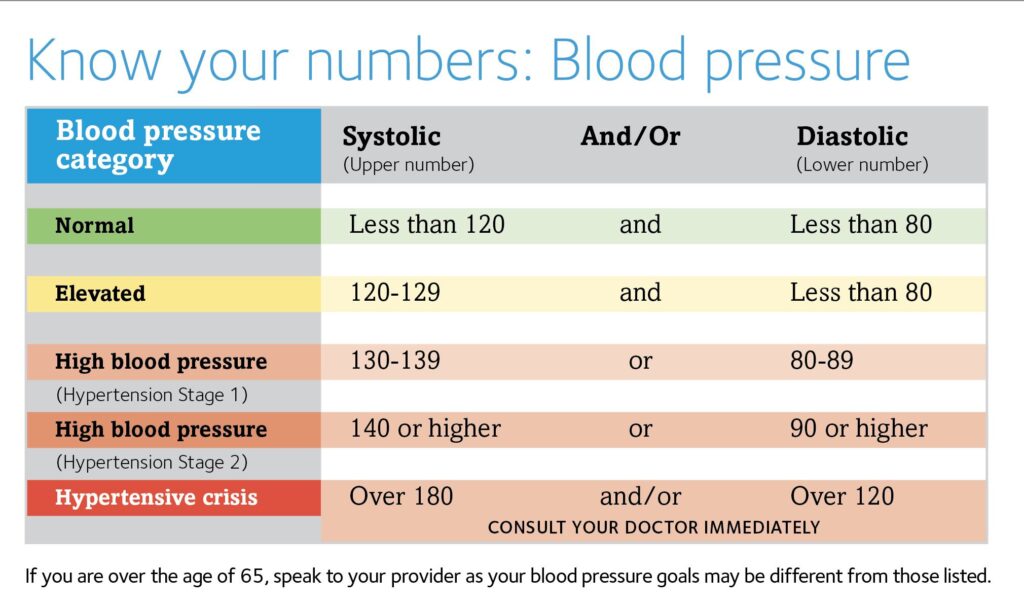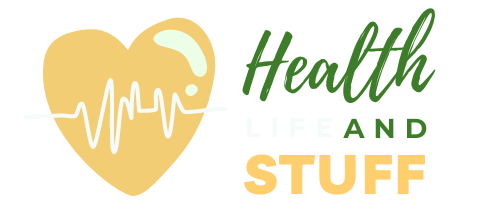Below is a chart of the various blood pressure ranges – afterwards, we go into the details of what it means to you.
If you are concerned you might have high blood pressure, see the Signs of High Blood Pressure.
Normal Blood Pressure Range Numbers
First entry is systolic pressure/second diastolic
Optimal blood pressure: 120/80
Normal: 120-129/80-84
High Normal: 130-139/85-89
Grade 1 hypertension: 140-159/90-94
Grade 2 hypertension: 160-179/100-109
Grade 3 hypertension: >180/>110
Isolated: >140/<90
What does it matter?

Blood pressure is the measure of how much pressure your blood puts against the various blood vessels of your body. It is important because if it is too high, your body, and especially your heart, will slowly start to become damaged.
The damage this causes takes a lot of time to happen but can be very serious – it can lead to issues like coronary artery disease, stroke and kidney damage, among other things.
Heart disease is the single worst killer of people in the United States.
What causes high blood pressure?
The blood in your body is regulated in many ways. How thick it is, what chemicals make it up, how fast the heart pumps it out – these are just some of the factors that play a role in blood pressure. With time, and especially as we age, the delicate balance becomes upset, and high blood pressure can become an issue.
How is high blood pressure treated?
There are two typical ways to treat blood pressure – lifestyle changes or medication.
Lifestyle changes can consist of losing weight, drinking less alcohol and getting exercise. Dietary changes can also help lower blood pressure, like consuming less salt and fats and eating more fruits and vegetables.
There are many medications that help treat blood pressure. The most commonly used are the ace inhibitors, the beta-blockers, the calcium channels blockers, and diuretics (easily remembered by the mnemonic ABCD).
For more ideas in general, see How to Lower Blood Pressure. It tells you what are the most common ways to lower blood pressure that tend to work well.
Also, Foods that Lower Blood Pressure may be of interest. It discusses which foods might lower your blood pressure – and which might raise it.
What do systolic and diastolic mean?

Systolic is when your heart has just made a beat. Blood is surging through your body and so your blood pressure is higher.
Diastolic is the moment after the beat when the blood in your body is not under as much of a push, so to speak, and is so lower.
How is blood pressure tested?
There are a variety of ways to test blood pressure. If you are testing in your home, it may be best to use an electric, automated upper arm band test. This is because it takes little training to use and will give fairly accurate results.
Other tests like wrist and finger measurements are subject to being slightly inaccurate. The way you hold or position your arm can complicate the reading and it is generally easier to use an upper arm band.
Sometimes you might feel nervous before getting your blood pressure tested which can increase it. It is best to rest for a few minutes before taking your pressure. Some doctors even recommend not paying attention to the result you get on the first day of testing your blood pressure because it might not be so accurate.
There is such a thing as the “white coat” effect. This happens when you see a doctor and, because he or she is an authoritative figure, your blood pressure goes up and is higher than it would normally be. To help avoid this, some doctors have the nurse take your blood pressure when you are relaxed.
Numbers taken from:
1) ESH-ESC Guidelines for the Management of Hypertension
2) Self-Measurement of Blood Pressure at Home in the Management of Hypertension
